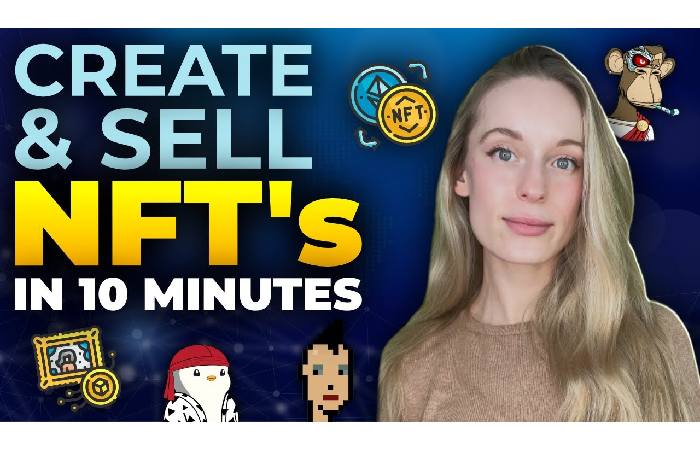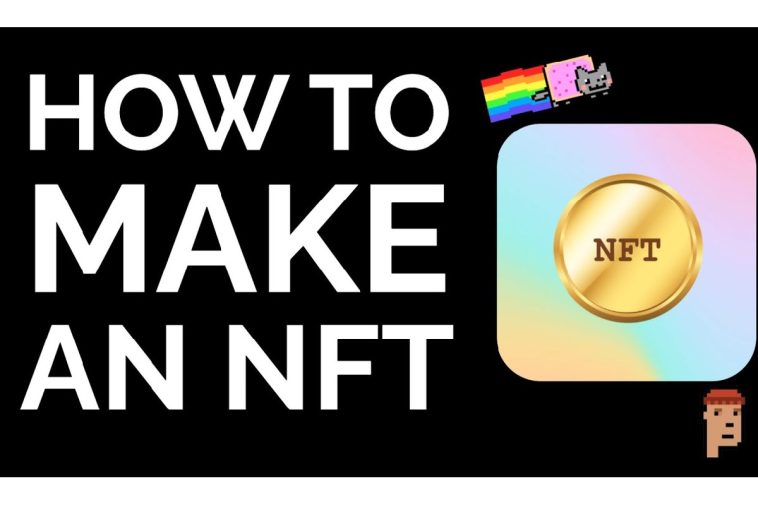How to Create and Sell Your NFT Art? – Creating and selling your NFT art involves a few key steps.
1. Create Your Art.
How to Create and Sell Your NFT Art? – It is the most essential step, as your art will be the foundation of your NFT. Make sure it is something that you are proud of and that you think people will want to buy.
2. Choose an NFT Marketplace.
There are many different NFT marketplaces, so choosing one right for you is essential. Some factors to consider include the fees charged by the market, the types of NFTs allowed, and the level of security.
3. Mint Your NFT.
Once you choose an NFT marketplace, you must mint your NFT, and it turns your art into a digital asset that can be bought and sold. There are a few ways to stamp an NFT, so choosing a method is essential.
4. Set a Price for Your NFT.
Once your NFT has been minted, you must set a price for it. It is entirely up to you, but it is essential to consider the value of your art and the current market conditions.
5. Promote Your NFT.
Once you have set a price for your NFT, you must promote it so people know about it. There are several different ways to encourage your NFT, such as social media, online forums, and NFT communities.
Here are Some Additional Tips for Creating and Selling Your NFT Art:

1. Make Sure Your Art is High Quality: People are more likely to buy NFTs that are well-made and visually appealing.
2. Be Creative: There are many different types of NFTs, so don’t be afraid to think outside the box. Promote your art early and often. The more people who know about your NFT, the more likely it is to sell.
3. Be Patient: It may take some time to sell your NFT but don’t give up. Keep promoting your art, and eventually, you will find a buyer.
What are NFTs?
NFT stands for a non-fungible token, and it is a unique digital asset that is stored on a blockchain. NFTs can represent anything from art to music to in-game items, and they are bought and sold online, often with cryptocurrency.
NFTs are different from fungible tokens, such as Bitcoin or Ethereum, in that they are not interchangeable. Each NFT is unique and valuable, making them ideal for representing digital assets that can be easily copied and shared.
NFTs are still a relatively new technology, but they have the potential to revolutionize the way we own and trade digital assets. They could also be used to create new digital art and entertainment forms.
Here are Some Examples of NFTs:
- Digital art
- Music
- In-game items
- Collectibles
- Virtual real estate
NFTs are bought and sold on NFT marketplaces. Some of the most popular NFT marketplaces include:
- OpenSea
- Variable
- SuperRare
- NBA Top Shot
NFTs can be bought and sold with cryptocurrencies like Bitcoin or Ethereum. However, some NFT marketplaces also accept fiat currency.
The value of NFTs can fluctuate wildly. Some NFTs have sold for millions of dollars, while others have been worth nothing. The market ultimately determines the value of an NFT.
NFTs are a new and exciting technology with the potential to revolutionize the way we own and trade digital assets. However, it is essential to remember that NFTs are still risky. The value of NFTs can fluctuate wildly, and there is no guarantee that you will make money from them.
The Future of NFTs and Tokenization
The future of NFTs and tokenization is auspicious. NFTs can potentially revolutionize how we own and trade digital assets, while tokenization can create new digital art and entertainment forms.
Here are some of the potential applications of NFTs and tokenization:
1. Digital Art and Collectibles:
NFTs can be used to represent digital art and collectibles, and they could make buying, selling, and trading these assets easier.
2. In-game Items:
NFTs can represent in-game items, such as weapons, armor, and skins. It could make it easier to trade these items with other players.
3. Virtual Real Estate:
NFTs can represent virtual real estate, such as land in a metaverse. It could make buying, selling, and renting virtual real estate possible.
4. Identity Verification:
You can use NFTs to verify identity. You can use NFTs to create a secure and tamper-proof digital identity.
5. Supply Chain Management:
You can use NFTs to track the supply chain of goods. It could help to ensure the authenticity and provenance of goods.
6. Financial Services:
NFTs can create new financial products and services. It could include things like tokenized securities and decentralized lending.
These are just a few of the potential applications of NFTs and tokenization. We expect to see even more innovative and groundbreaking uses as this technology develops.
Conclusion:
How to Create and Sell Your NFT Art? – Make sure your art is high quality. People are more likely to buy NFTs that are well-made and visually appealing. Be creative. There are many different types of NFTs, so don’t be afraid to think outside the box.
Promote your art early and often. The more people who know about your NFT, the more likely it is to sell. Be patient. It may take some time to sell your NFT but don’t give up. Keep promoting your art, and eventually, you will find a buyer.




GIPHY App Key not set. Please check settings